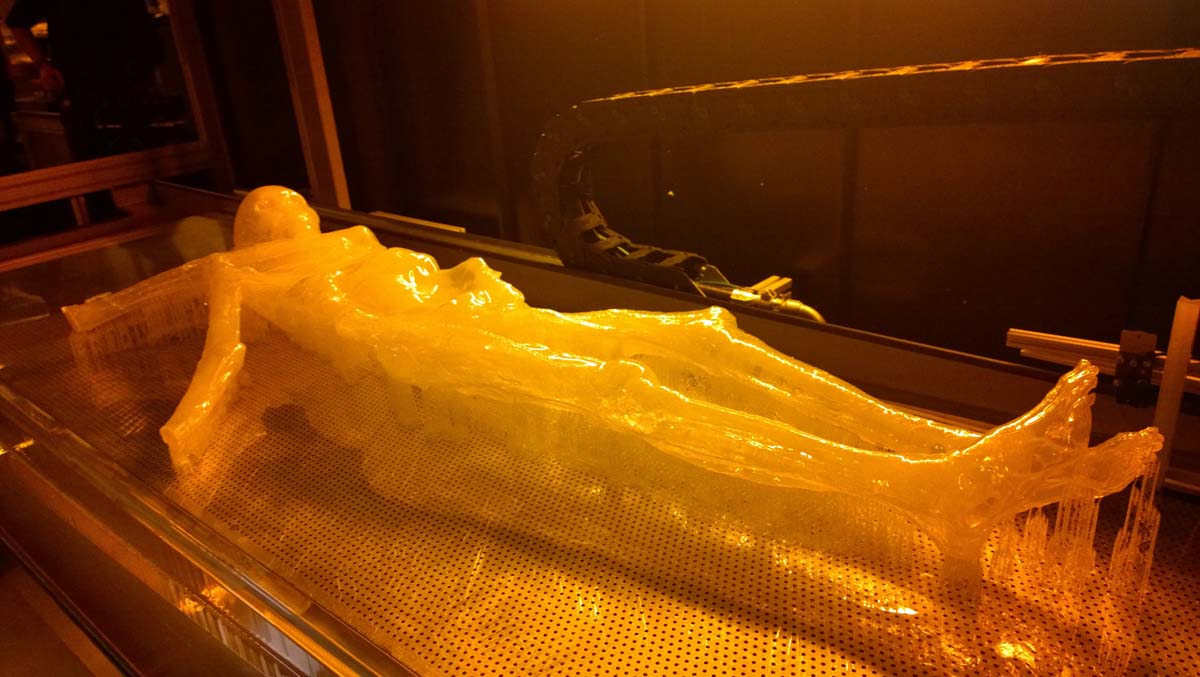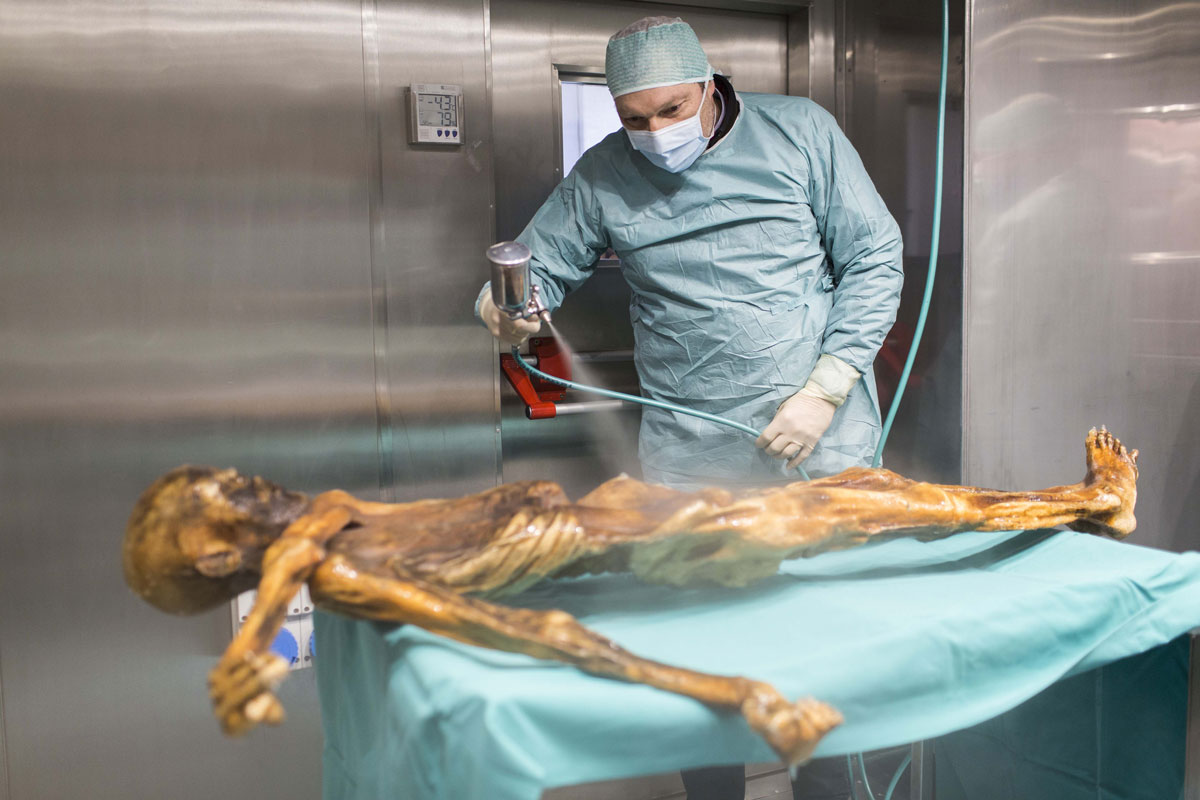 |
| Forensic reconstruction imagines this is what the 5300-year-old Ötzi looked like. (Thilo Parg, CC BY-SA 3.0) |
by Adrienne Montgomerie
An arrow sang through the air and plunged deep into a man’s shoulder 5300 years ago in Italy. That man fell as he gasped his last breath, his left arm flung awkwardly across his chest, pinned beneath him.
An arrow sang through the air and plunged deep into a man’s shoulder 5300 years ago in Italy. That man fell as he gasped his last breath, his left arm flung awkwardly across his chest, pinned beneath him.
A mummy is not what you expect to find when
you’re strolling through the Alp mountains with your husband. But that’s what
happened to the group of mountaineers who found this mummified man in 1991.
What happened to this man? Why did he lay there, undiscovered, for so long? What can his body tell us about humans and life so long ago?
Because he died in a place that is always cold, his body did not disappear into the earth or get eaten by animals. All his parts are there, exactly where they were. He is not covered in rags like a mummy in a movie, but we say his body was mummified because it did not rot. This ancient man they named Ötzi, contains a lot of clues.
.
Learning without destroying
Early scientists would cut apart specimens
to learn about them, but that destroyed the body. Today, scientists know that
the more they can preserve, the more will be available for other scientists to
learn from, and for new technologies that get developed in the future.
The body is too fragile let everyone examine it closely, so 3D printing was used to create a copy so people can get a closer look at him.
Preserving the iceman Ötzi, so that others can
study him, means keeping his body in a room that is –6 °C and nearly 100%
humidity — just like on a glacier. The room is dim too, to protect the artifacts
from damaging light. An alarm goes off it the room changes. |
| The 3D print formed the base that the sculpture is made from. (Materialise) |
 |
| Ötzi is kept at –6 °C and nearly 100% humidity. (South Tyrol Museum of Archaeology) |
Dinosaur bones are replicated for display,
too. That’s right, the bones you see in the museum are not the actual bones
that were dug up. The originals are stored in conditions that keep them from
falling apart, so that scientists (like archeologists) can study them.
.
.
What can scientists find out from the iceman?
Well, first, they can find out how long
humans might have lived, so long ago. Because we have a lot of data about how
bones age, scientists can estimate that Ötzi was 45 years old when he was killed.
Because of what we know about how vocal
chords work, scientists
can guess what Ötzi’s
voice sounded like.
Because of the contents of his stomach, they can find out what kind of diet people had that long ago. His last meal was ibex, deer, and grain. His stomach also gives clues about where he travelled, because of the h. pylori bacteria they found in his gut came from Asia, very far away from Italy.
By analysing his DNA, they can find out that he was lactose intolerant, was likely to get heart disease, and had Lyme disease.
 |
| His shoes look a bit like Uggs. (Wolfgang Sauber, CC BY-SA 3.0) |
Because of the bits of clothes that were still on him, researchers can make guesses about the style of clothes he wore and the animals that they were able to kill (to use to make clothes).
Because of X-ray and CAT scans, we know there is an arrow-head lodged in his shoulder. But forensics showed he had many more injuries — the kinds that people get from a fight — and blood from four other people on his clothes and tools. Now experts think he actually died from a hit to his head.
.
Mysteries still
There’s still a lot you can’t know by
examining a body. Wouldn’t you like to know where Ötzi lived and why he was in the mountains? Who
he was fighting and why? How big was his family, and did his brothers and
sisters play pranks on each other?
.
.
Learn more
There are a couple documentaries about Ötzi (Iceman Reborn,
and others by NOVA), and several websites explaining
different aspects scientists have discovered about him (follow the links in
this article). You can even find out how a body
becomes a mummy naturally.
You can see the Ötzi copies in person at the DNA Learning Centres in New York city and Cold Spring Harbor, USA. To see him in person, you have to look through a small window into a climate-controlled room at the South Tyrol Museum of Archaeology in Bolzano, Italy.
You can see the Ötzi copies in person at the DNA Learning Centres in New York city and Cold Spring Harbor, USA. To see him in person, you have to look through a small window into a climate-controlled room at the South Tyrol Museum of Archaeology in Bolzano, Italy.
No comments:
Post a Comment